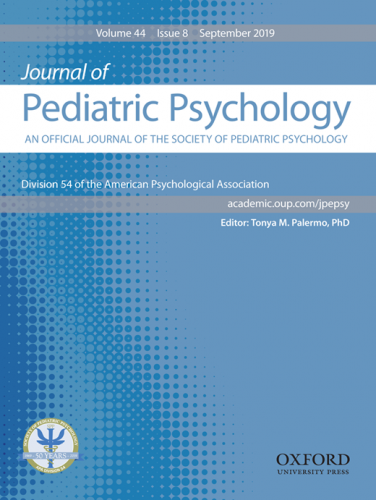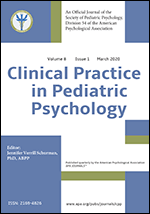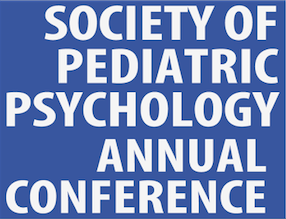Fact Sheet: Juvenile Idiopathic Arthritis
Juvenile idiopathic arthritis (JIA), previously called juvenile rheumatic arthritis (JRA), is a chronic rheumatic disease that involves acute and chronic tissue inflammation of the joints and their supporting tissue in children and adolescents under the age of 16. JIA presents predominately in the peripheral joints and arthritis symptoms persist longer than 6 weeks. The etiology of JIA is not known, although variables thought to be important in the pathophysiology of the disease include genetic predisposition, unknown environmental triggers, and immune reactivity to infection.
Prevalence and Course
The prevalence of JIA is estimated from between 4 to 150 cases per 100,000 children worldwide. It is estimated that there are approximately 300,000 children with JIA in the USA.
JIA encompasses seven subtypes of arthritis including oligoarticular JIA, seropositive polyarticular JIA, seronegative polyarticular JIA, systemic-onset JIA, enthesitis-related arthritis, juvenile psoriatic arthritis, and undifferentiated JIA.
Inflammation of the joints and chronic pain are the primary clinical manifestations of JIA. The majority of children report mild but frequent pain, with approximately 8–14% of children experiencing a more severe disease course and worse quality of life. Joint inflammation and pain can persist into adulthood.
Health and Psychosocial Consequences
Children with JIA have an increased risk for impaired physical functioning, school absences, overall adjustment problems, and anxious and depressive symptoms. However, most children with JIA are similar to healthy peers in terms of self-concept, self-esteem, perceived competence, body image, social competence, social support and psychological functioning.
Evidence-based Assessment
Domains of assessment relevant for children with JIA include pain characteristics, physical, social, emotional, and family functioning, and health habits. A variety of evidence-based assessment tools are available such as the Pediatric Quality of Life Rheumatology, Juvenile Arthritis Quality of Life Questionnaire, and Paediatric Rheumatology Quality of Life Scale.
Culture, Diversity, Demographic and Developmental Factors
Although children from all ethnic backgrounds can develop JIA, it is most common in Caucasians. Overall, girls develop JIA more frequently than boys. The most frequent form of JIA (oligoarticular) is more common in toddlers than in older children. Despite equivalent levels of healthcare utilization, patients of racial and ethnic minority, and those of lower socioeconomic background tend to experience worse outcomes.
Evidence-based Interventions
The aim of treatment is multidimensional and includes controlling pain, preserving range of motion/muscle strength, disease remission, managing systemic complications and facilitating normal physical and psychosocial development. Research supports the efficacy of multimodality medical treatment, physical/exercise therapy, and psychological therapies. Cognitive-behavioral interventions, including relaxation, biofeedback, and multicomponent interventions are shown to be effective for pain reduction in children with JIA musculoskeletal pain.
Resources
- American College of Rheumatology. https://www.rheumatology.org/
- Arthritis Foundation. https://www.arthritis.org/about-arthritis/types/juvenile-idiopathic-arthritis-jia/what-is-juvenile-idiopathic-arthritis.php
Authors: Cindy Karlson, PhD
Date of last update: May, 2019
References
- Anthony, K. K., & Schanberg, L. E. (2005). Pediatric pain syndromes and management of pain in children and adolescents with rheumatic disease. Pediatric Clinics of North America, 52, 611-639. doi: 10.1016/j.pcl.2005.01.003
- Carle, A.C., Dewitt, E. M., & Seid, M. (2011). Measures of health status and quality of life in juvenile rheumatoid arthritis: Pediatric Quality of Life Inventory (PedsQL) Rheumatology Module 3.0, Juvenile Arthritis Quality of Life Questionnaire (JAQQ), Paediatric Rheumatology Quality of Life Scale (PRQL), and Childhood Arthritis Health Profile (CAHP). Arthritis Care Research (Hoboken), 63, Suppl 11, S438-445. doi: 10.1002/acr.20560
- Giancane, G., Alongi, A., & Ravelli, A. (2017). Update on the pathogenesis and treatment of juvenile idiopathic arthritis. Current Opinion in Rheumatology, 29, 523-529. doi: 10.1097/BOR.0000000000000417
- Helmick, C. G., Felson, D. T., Lawrence, R. C., Gabriel, S., Hirsch, R., Kwoh, C. K.,…National Arthritis Data Workgroup. (2008). Estimates of the prevalence of arthritis and other rheumatic conditions in the United States. Part I. Arthritis and Rheumatism, 58, 15-25. doi: 10.1002/art.23177
- Hullmann, S.E., Ryan, J.L., Ramsey, R.R., Chaney, J.M., & Mullins, L.L. (2011). Measures of general pediatric quality of life: Child health questionnaire (CHQ), DISABKIDS Chronic Generic Measure (DCGM), KINDL-R, Pediatric Quality of Life Inventory (PedsQL) 4.0 Generic Core Scales, and Quality of My Life Questionnaire (QoML).
- Kuntze G., Nesbitt, C., Whittaker, J. L., Nettel-Aguirre, A., Toomey, C., Esau, S.,…Emery, C. A. (2018). Exercise Therapy in Juvenile Idiopathic Arthritis: A Systematic Review and Meta-Analysis. Archives of Physical Medication and Rehabilitation, 99, 178-193. doi: 10.1016/j.apmr.2017.05.030
- LeBovidge, J. S., Lavigne, J. V., Donenberg, G. R., Miller, M. L. (2003). Psychological adjustment of children and adolescents with chronic arthritis: A meta-analytic review. Journal of Pediatric Psychology, 28, 29-39. doi: 10.1093/jpepsy/28.1.29
- Lewis, K. A., Brown, S. A., Tiziani, S., & Carrasco, R. Sociocultural Considerations in Juvenile Arthritis: A Review. (2017). Journal of Pediatric Nursing, 37, 13-21. doi: 10.1016/j.pedn.2017.08.023
- Mullick, M. S., Nahar, J. S., & Haq, S. A. (2005). Psychiatric morbidity, stressors, impact, and burden in juvenile idiopathic arthritis. Journal of Health, Population and Nutrition, 23, 142-149.
- Oen, K., Guzman, J., Dufault, B., Tucker, L. B., Shiff, N. J., Duffy, K. W.,…the Research in Arthritis in Canadian Children emphasizing Outcomes (ReACCh-Out) investigators. Health-Related Quality of Life in an Inception Cohort of Children With Juvenile Idiopathic Arthritis: A Longitudinal Analysis. (2018). Arthritis Care & Research (Hoboken), 70, 134-144. doi: 10.1002/acr.23236
- Ostlie, I. L., Aasland, A., Johansson, I., Flatö, B., & Möller, A. (2009). A longitudinal follow-up study of physical and psychosocial health in young adults with chronic childhood arthritis. Clinical and Experimental Rheumatology, 27, 1039-1046.
- Ramsey, R.R., Bonner, M.S., Ryan, J.L., Mullins, L.L., & Chaney, J.M. (2013). A prospective examination of attitudes toward illness and depressive symptoms in youth with juvenile rheumatic diseases. Journal of Developmental and Physical Disabilities. 25, 171-180. doi: 10.1007/s10882-012-9294-0.
-
Shenoi, S., Horneff, G., Cidon, M., Ramanan, A. V., Kimura, Y., Quartier, P.,…Wulffraat, N. (2018). The burden of systemic juvenile idiopathic arthritis for patients and caregivers: an international survey and retrospective chart review. Clinical and Experimental Rheumatology, 36, 920-928.



